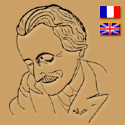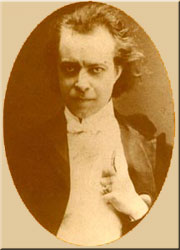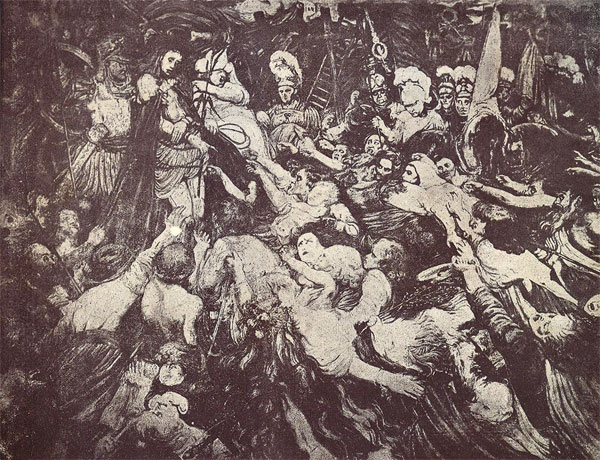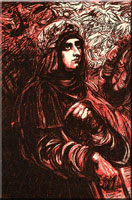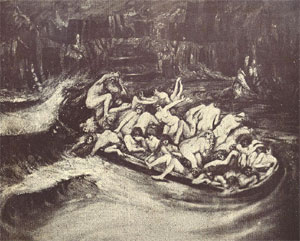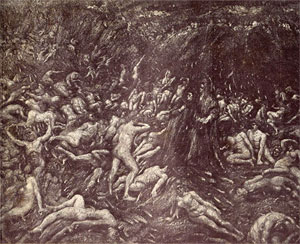| Henry de Groux |  |
Henry de Groux, returning at once to the great compositions of yesteryear, without concern for the fashions of the schools, for the little Byzantine discussions, brought to the Parisians of 1892, an immense canvas, in which Christ was dying surrounded by a foul crowd, whose the horrible waves broke to his distress: “Christ in the insults”. Signaled in this way, Henry de Groux gradually mingled with the group of poets who tried, between 1892 and 1900, to renovate poetry, by a mixture of symbolism and naturalism. In those literary circles to which his art laden with thought and poetry was akin, Henry de Groux met Louis le Cardonnel, in search of an ideal which he would fulfill through the priesthood.
Then Emile Sicard, poet of Provence had him come to him to work on a bust of Emmanuel Signoret and in 1914 the bust was ready, already posed on a place of Lançon in the middle of beautiful plane trees which dilated in ardor and the light of the Provençal summer. One day, Henry de Groux in Avignon got the wrong door and knocked on Roure, this former hotel of the Baroncelli family acquired, on that date, not long ago, by Jeanne de Flandreysy. Henry de Groux explained his mistake, but he was invited to spend the day in this beautiful old house anyway: he spent the day and three more years there.
Then he was able to settle in the Old Port of Marseille. Sun, mistral, smell of shells, cars, reflection of boats in blue water, amalgamation of colors, scents, sounds that penetrate into a luminous unity, and above all, in the azure, the smile gilded Notre Dame de la Garde, here is the famous setting, where for 5 years, Henry de Groux worked, at No. 15 of the quai de Rive-neuve. At that time a kind of interior joy seemed, under the influence of Provence to have animated his work, he made strange farandoles dance on his canvases, under the pines shaken by theMistral, in front of a sea flushed with the setting sun, all an intoxication of movements which went from men to the trees; he composed there, for this great theater which he did not content himself with living in, but he wanted to decorate, in two vast frescoes, a feast of Trimalcion all teeming with orgiastic life, evocative of this Petronius whom we are told he was from Massilia. There he painted many poems in oil or in charcoal by Marseilles and Marseillais, in whose eyes he inscribed all the languor of the Latin, Greek and already oriental South. Henry de Groux loved Provence, he who had loved Italy so much; of this Italy, he rediscovered in Provence, horizons, monuments, good grace, caressing familiarity, he was loved by all those who, in Marseilles, Avignon, Aix, had had the happiness of approaching him; his conversation was simple, cordial, full of exquisite finesse, of quasi-ecclesiastical politeness, of abundant and precious anecdotes. Notes by Emile Ripert about Henry de Groux
|
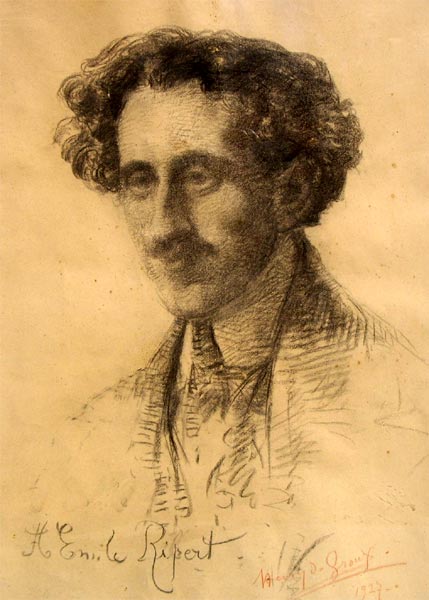
Emile RIPERT by Henry de Groux – 1927
